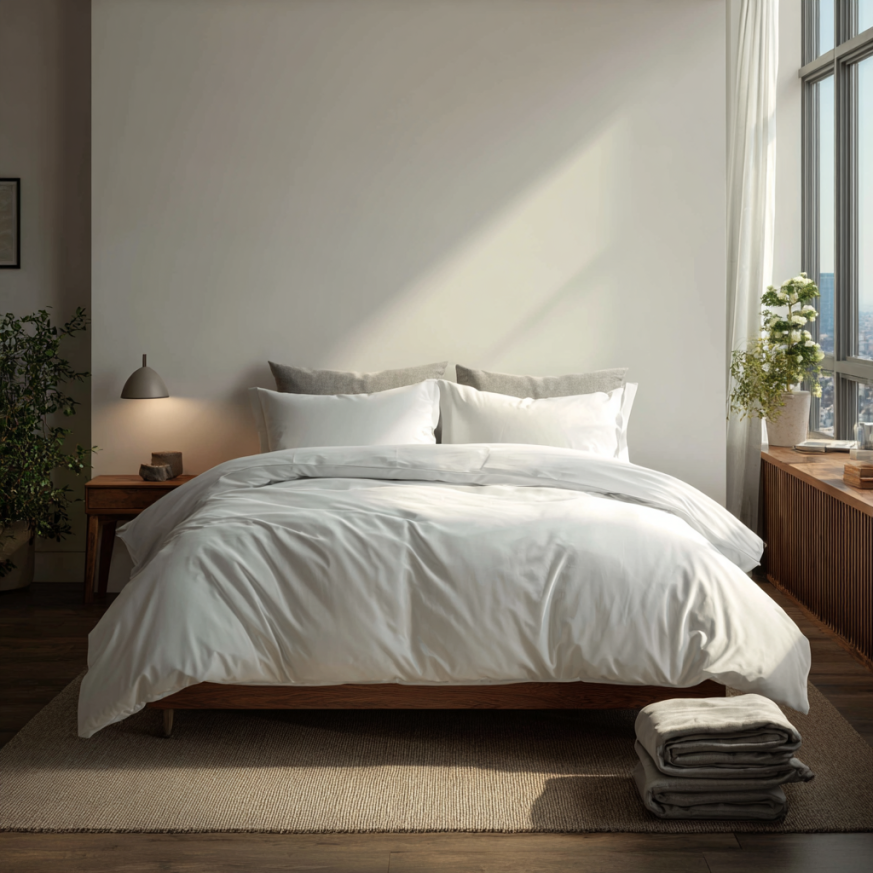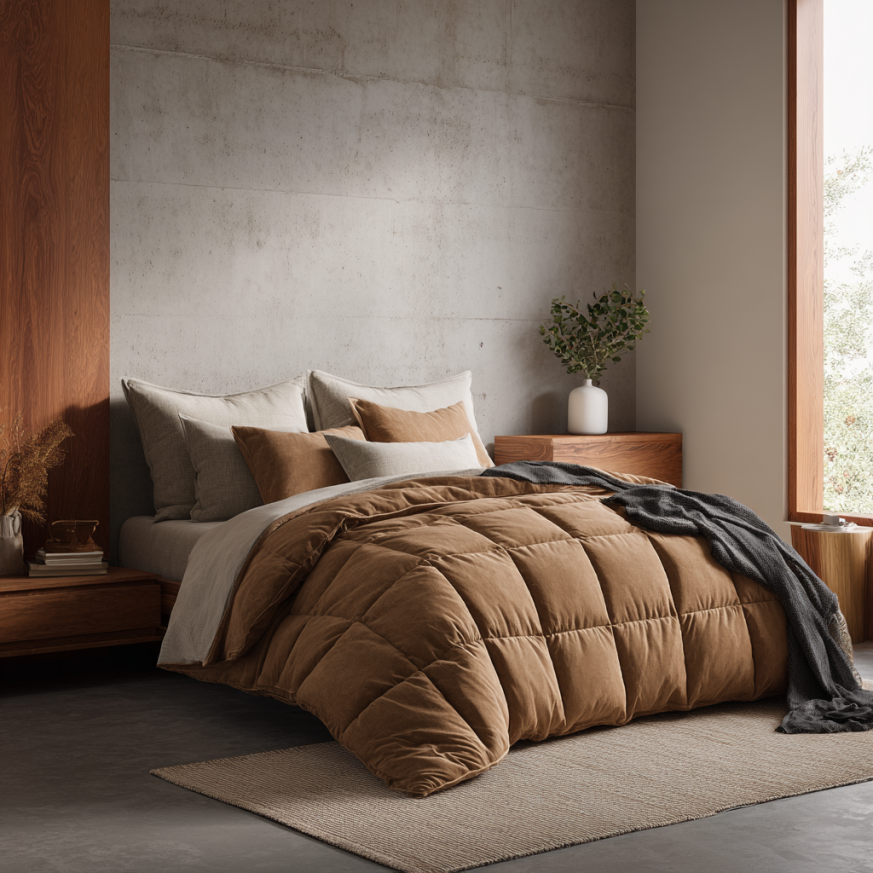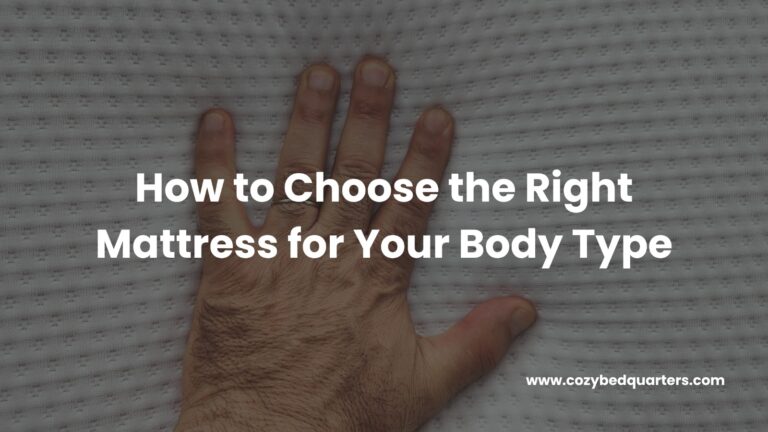Duvet or Comforter: 7 Key Differences to Know
Trying to decide between a duvet and a comforter? This guide compares their 7 key differences to help you find the best bedding for your sleep style and decor. Whether you prefer the adaptable features of a duvet or the simplicity of a comforter, understanding these options will guide you to a better night’s sleep.
Key Takeaways
- Duvets have removable covers for easier cleaning and customization.
- Comforters are all-in-one and simpler but less adaptable.
- Duvets typically provide better warmth and seasonal flexibility.
- Comforters are budget-friendly and ready to use out of the box.
Choosing between a duvet or comforter can be a tough decision, especially with so many options available. Both are designed to keep you warm and cozy during the night, but they differ in style, functionality, and maintenance. Understanding these differences will help you choose the best option for your needs and preferences. Let’s dive into the seven key differences to consider when deciding between a duvet or comforter.
What is a Duvet?
A duvet is a soft, flat bag filled with materials like down, feathers, or synthetic fibers. What sets a duvet apart is its removable cover, much like a pillowcase. The duvet insert itself is often plain, while the cover allows for endless design options in various colors, patterns, and textures.
This versatility makes duvets a popular choice for those who enjoy switching up their bedroom decor. 
What is a Comforter?
A comforter is a single, quilted blanket filled with down or synthetic materials. Unlike a duvet, a comforter does not require a separate cover and often comes in various colors and patterns. 
1. Ease of Cleaning
When it comes to cleaning, the difference between a duvet or comforter becomes evident. Duvets typically come out on top with removable, washable covers. Inserts need occasional cleaning only. Comforters must be washed whole, often needing special care.
2. Warmth and Insulation
Duvets offer superior insulation and can be adapted for warmth with different covers. Comforters provide fixed warmth levels. If you’re wondering whether a duvet or comforter is warmer, the duvet often wins in colder climates.
3. Style and Aesthetics
Duvets allow for frequent style changes with new covers. Comforters often come pre-designed for simplicity. Whether you choose a duvet or comforter, style preferences play a big role. Decor ideas here. 
4. Fill Types and Comfort
Duvets typically feature down or premium fill for a plush feel. Comforters usually use synthetic fill like polyester, which is affordable and hypoallergenic. When selecting a duvet or comforter, the fill type can significantly affect your comfort level.
5. Durability and Longevity
Duvets last longer due to protective covers. Comforters wear out faster due to full-unit washes. If you’re investing in quality, think about whether a duvet or comforter will hold up longer under frequent use.
6. Seasonal Versatility
Duvets adapt easily to seasons with different covers. Comforters are single-layer and less flexible. For year-round comfort, many people find a duvet or comforter with appropriate weight makes all the difference. 
7. Personal Preference and Lifestyle
If you value ease and flexibility, go with a duvet. Prefer simplicity? A comforter is your answer. More info. Think about how a duvet or comforter fits into your daily routine and cleaning habits.
Final Thoughts
Choosing between a duvet and comforter doesn’t have to be daunting. Evaluate your lifestyle, climate, and aesthetic needs to decide. Either option can help you create a restful, cozy bedroom sanctuary. Your decision between a duvet or comforter should align with how you live, sleep, and relax.
FAQ
- Which is better for allergies: duvet or comforter?
- Synthetic fill duvets or comforters are hypoallergenic and best for allergy sufferers.
- Can you use a duvet without a cover?
- Technically yes, but it’s not recommended as it reduces durability and hygiene.
- How often should I wash a duvet cover?
- Wash it every 1–2 weeks, just like your bed sheets.
- Are comforters good for hot sleepers?
- Lightweight, breathable comforters can work, but duvets offer better seasonal control.























